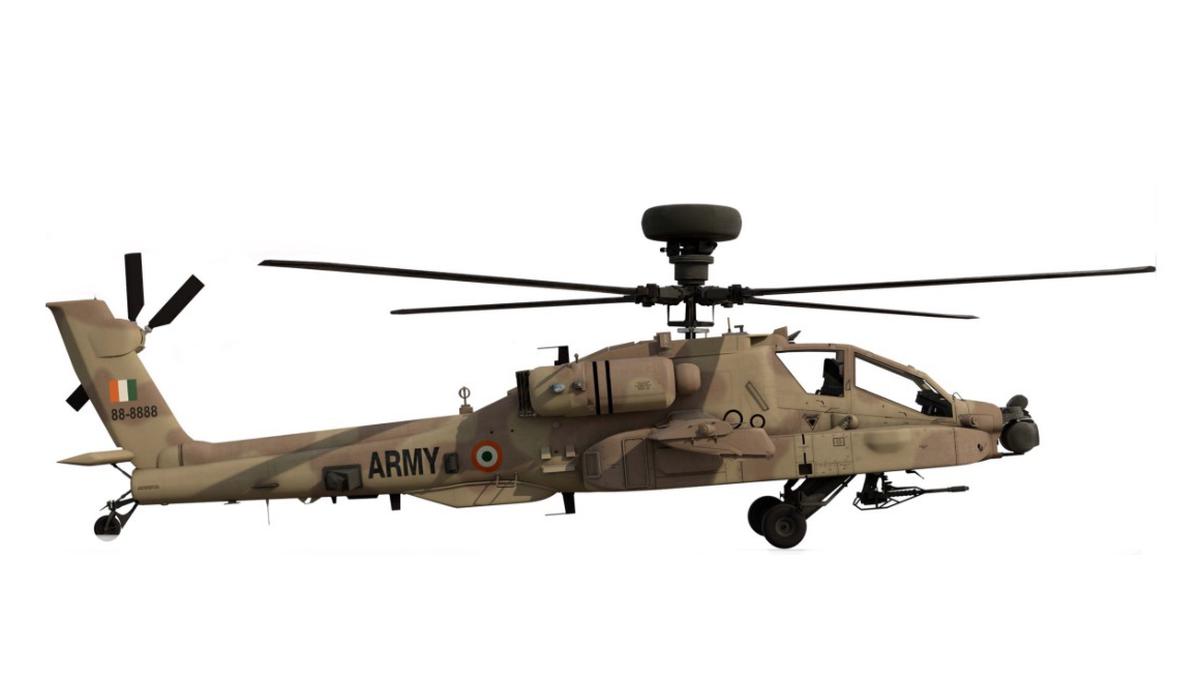SOURCE: AFI


The Indian Army’s long-awaited Boeing AH-64E Apache attack helicopters are now expected to begin arriving in July 2025, according to a recent report by The Sunday Guardian Live. This development follows multiple delays in a $800 million deal signed in February 2020 during then-U.S. President Donald Trump’s visit to India, which was intended to deliver six of these advanced combat helicopters to bolster the Army’s Aviation Corps.
As per the original contract, all six AH-64E Apaches were slated for delivery by February 2024. However, Boeing cited supply chain disruptions and technical issues, including concerns over electrical power generator failures that could cause hazardous cockpit smoke, as reasons for postponing the timeline. In September 2024, The Sunday Guardian reported that Boeing had revised its schedule, targeting deliveries by February 2025. Despite this, as of June 2025, not a single helicopter has been delivered, leaving the Army’s 451 Aviation Squadron, raised in March 2024 at Nagtalao, Jodhpur, non-operational despite being fully staffed and trained.
The latest update suggests that the first batch of three Apaches is expected to arrive in July 2025, with the remaining three to follow by October–November 2025, marking a delay of over 18 months from the original schedule. Defense sources attribute the setbacks to Boeing’s rigorous testing to address safety concerns, exacerbated by India’s initial low ranking in the U.S. Defense Priorities and Allocations Systems Program (DPAS). This issue was partially resolved through diplomatic interventions in April–May 2024, but lingering supply chain bottlenecks continue to hinder progress.
The AH-64E Apache, often dubbed a “flying tank,” is a multi-role combat helicopter renowned for its advanced targeting systems, Hellfire precision-strike missiles, Stinger air-to-air missiles, and a chin-mounted gun capable of firing 625 armor-penetrating rounds per minute. Its ability to control unmanned aerial vehicles (UAVs) and conduct reconnaissance makes it a critical asset for the Indian Army, particularly for operations in the desert regions near the Pakistan border, where it will counter armored threats. The Apaches are expected to complement the Indian Air Force’s (IAF) existing fleet of 22 AH-64Es, inducted between 2019 and 2021 under a separate $3.1 billion deal signed in 2015.
The delays have also raised broader questions about India’s reliance on foreign defense suppliers. Some analysts, as reported on X, suggest that the setbacks could be linked to geopolitical tensions, with speculation that the Biden administration may have deliberately slowed deliveries as a pressure tactic due to India’s neutral stance on the Russia-Ukraine conflict. However, with the Trump administration’s return, there are indications of renewed focus on U.S.-India defense cooperation, potentially accelerating deliveries. The deal’s strategic importance is underscored by Boeing’s collaboration with Tata Advanced Systems Ltd. in Hyderabad, which produces Apache fuselages, with 90% of parts sourced locally, boosting India’s aerospace manufacturing under the “Make in India” initiative.
The Apache acquisition aligns with the Army’s push to establish its own attack helicopter squadrons, distinct from the IAF, which has historically operated such assets. This shift addresses the Army’s need for organic close-air support, particularly in armored warfare scenarios. The helicopters are expected to enhance India’s capabilities under its unofficial Cold Start Doctrine, enabling rapid responses to regional threats, particularly from Pakistan.
NOTE: AFI is a proud outsourced content creator partner of IDRW.ORG. All content created by AFI is the sole property of AFI and is protected by copyright. AFI takes copyright infringement seriously and will pursue all legal options available to protect its content.